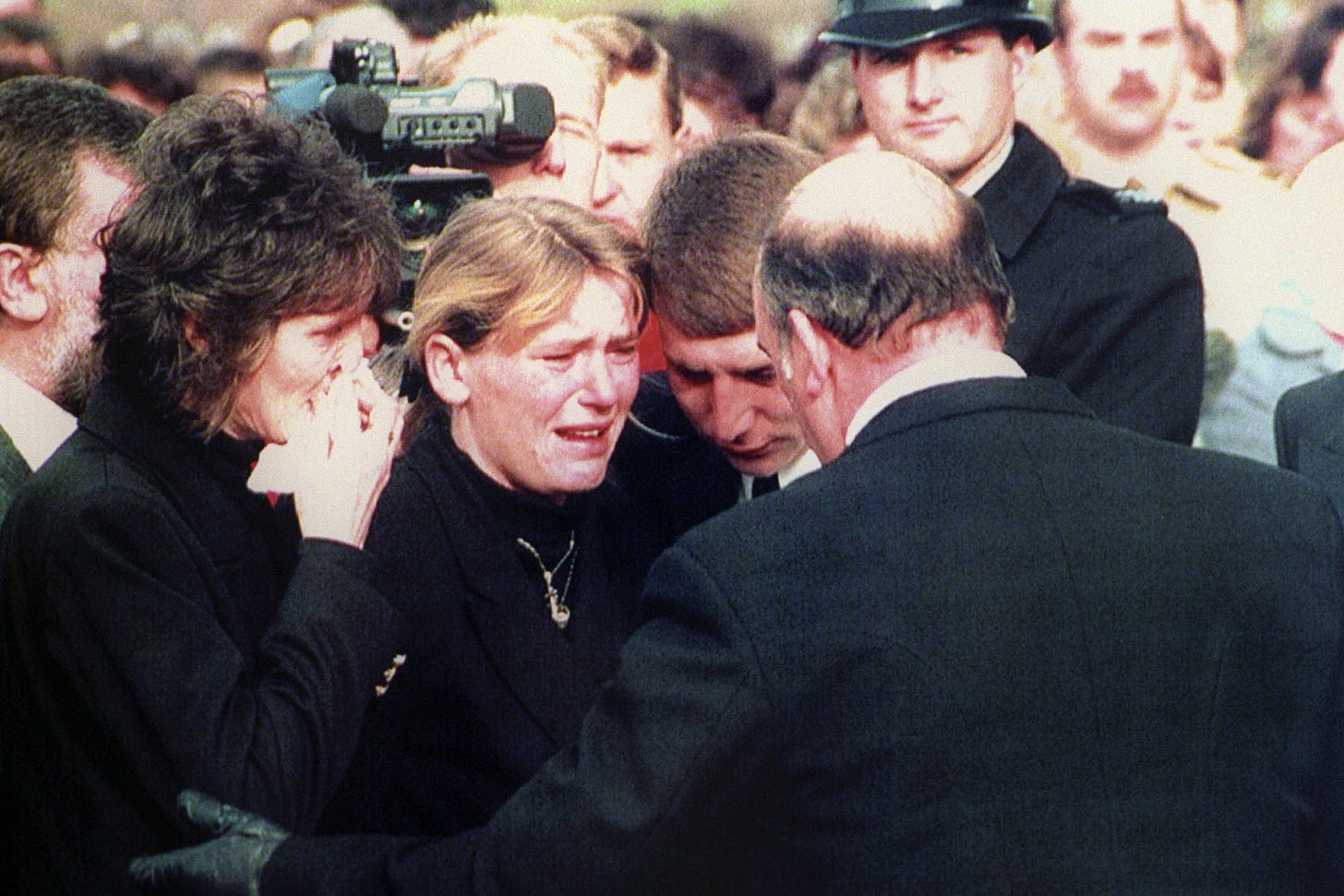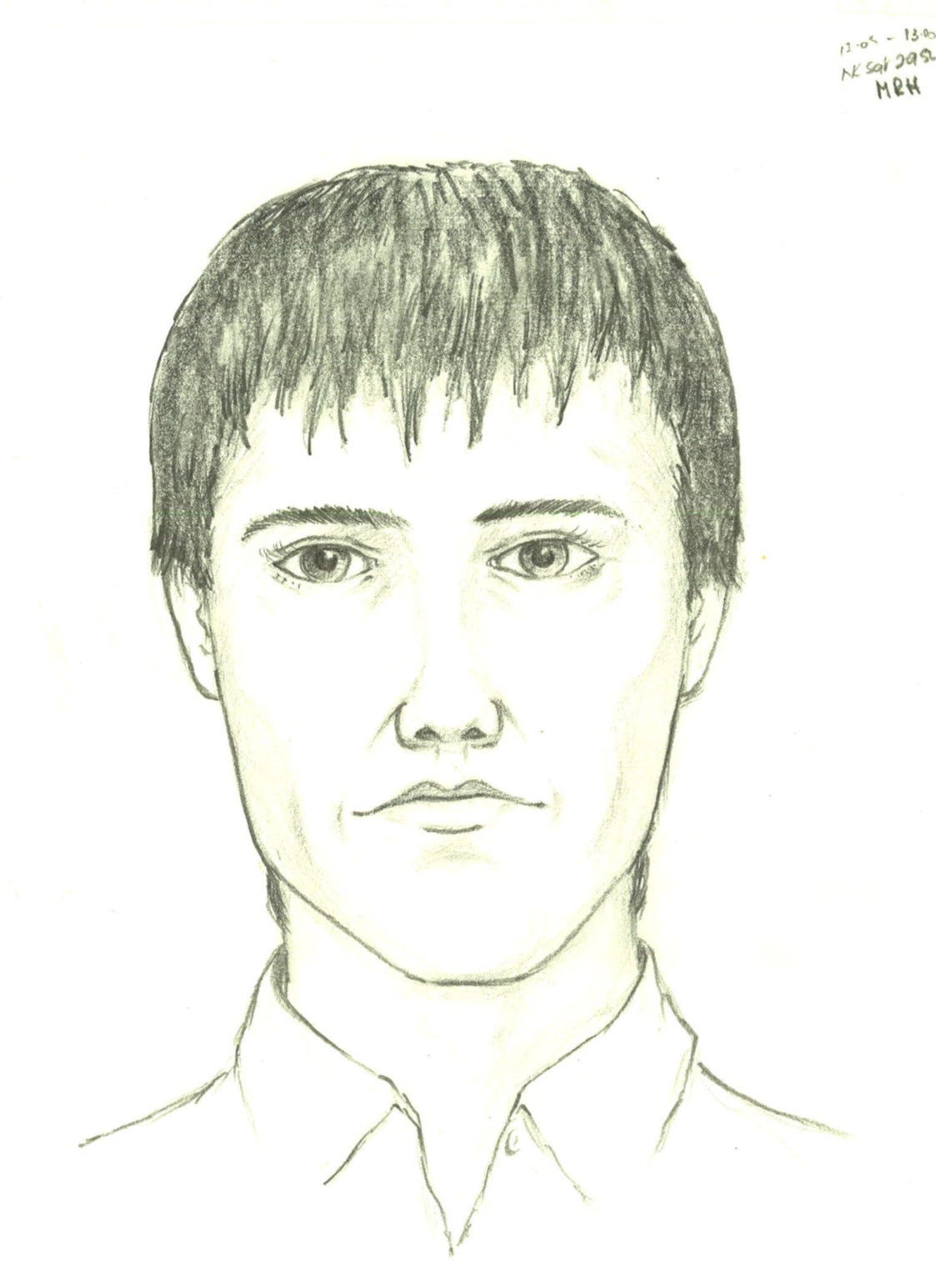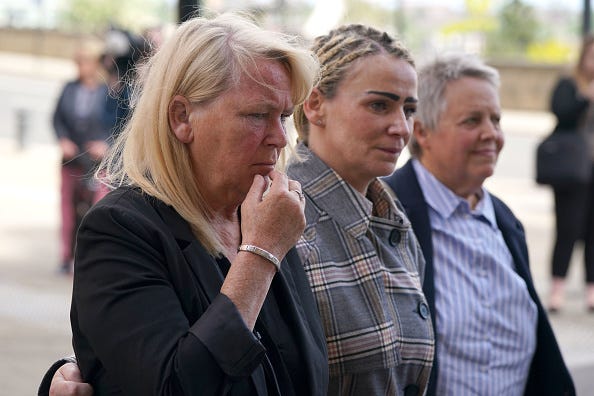Three Doors Down: A murder, a mother, and a thirty year investigation
My five-episode podcast series, with Tortoise Media, is out now. It details an extraordinary miscarriage of justice and Sharon Henderson's campaign to catch her daughter's killer.
Nikki Allan, months before her death
On 7 October 1992, seven-year-old Nikki Allan was brutally murdered, her body left in a semi-derelict building. The child had been lured from nearby her home by a tall, white, clean-shaven man in his 20s whom she obviously knew. Her last moments alive were captured on CCTV – poor quality, grainy footage showing a small girl skipping behind a man who appears to be striding purposefully ahead.
Listen to the trailer of Three Doors Down here
But her killer got away with it – until he was finally convicted almost 31 years later.
Nikki, a shy girl who was small for her age, lived in the east end of Sunderland on an estate called Wear Garth with her three sisters and her mother, Sharon Henderson. Sharon was only 25 years old when Nikki died. The estate was a rundown block of flats, with balconies and a central courtyard where children played while their parents watched over them.
Many of the estate’s tenants were related, and some families in the Garths had lived there for four generations. It was a close community in that most knew each other – but, unlike the romanticised version, not everyone “looked out for each other”. Mistrust of the police was endemic.
Nevertheless, as Sharon told me, “We were a happy little family. We didn’t have much, but we loved each other, and we knew no different.”
Sharon Henderson at her daughter’s funeral, 1992
I first met Sharon in 2006 after reading a report in the local paper during a visit to my family in the North East. Dominating the article was a photograph of a pained-looking woman standing by a child's grave. The headline read:
MUM BID TO DIG UP DAUGHTER
Sharon was calling for Nikki’s remains to be exhumed to test it for DNA evidence, since the science had significantly advanced since 1992. I was intrigued. I felt that this story – about violence against women and girls, unsolved crimes, the North East and working-class families – should have been on my radar, both as a journalist and as a feminist campaigner.
The local paper did give a bit of background: a man called George Heron had been tried and acquitted of the murder. Since then, no other suspect had been in the frame. I could see that Sharon was desperate for some kind of resolution, which was why she’d gone to the local paper with her latest demand. I looked back to the original press cuttings, and was shocked at what I discovered.
Watch the trailer here:
George Heron was acquitted because the main plank of evidence presented to the court was his confession to police over several days in custody. The judge had ruled most of the tapes of the interviews inadmissible because the police had used “overly oppressive tactics” and put words into the mouth of the defendant. Heron had not been identified by key witnesses during an ID parade, and the description of the man last seen with Nikki Allan did not fit Heron, who was short to medium height, had a moustache, and wore glasses.
The evidence wasn’t convincing and Heron was found not guilty. The police made a statement on the steps of the court saying, “We are not looking for anyone else”. This gave the impression that they believed that Heron was their man – why else would they not look for the killer unless they were convinced they already had him?
***
Listening to the aftermath of the verdict was a man called David Boyd. He lived in the flat three doors down from where Nikki Allan went missing. Boyd was living with his girlfriend Caroline Branton – who had, on a couple of occasions, babysat for Nikki – and Boyd knew the child. He was tall, clean shaven, and did not wear glasses.
I immersed myself in the press coverage of the murder and attended every day of the subsequent trial. The details of the crime were harrowing.
On the evening of her murder Nikki was with her mother visiting her grandfather’s flat, two floors above theirs. She asked to go back home when the vacuum cleaner was turned on because she was scared of the noise it made. Sharon watched her daughter walk across the veranda and down the stairs, until she disappeared from sight.
But before reaching her flat, Nikki was lured away by the man seen on the CCTV. She was taken to a patch of waste ground nearby, outside a semi derelict warehouse. The man did something to make Nikki scream. A witness described hearing a loud, piercing noise that she thought might be a cat. Nikki’s lifeless body was discovered in the basement of the Exchange Building after locals searching the area found her coat and shoes on the wasteland.
The murder was brutal. Nikki’s killer brought a brick down on her head twice, shattering her skull, then stabbed her 37 times through the abdomen, heart and lungs.
The Old Exchange Building where Nikki was murdered
The atrocity of her murder was followed by another terrible thing: police focused on the wrong man as their prime suspect. George Heron was a slightly off-beat character who was desperately shy and seemed to prefer the company of children to adults. He was intelligent, but found it difficult to communicate, and would talk to Nikki in the play area of the estate, telling her he “loved her to the moon and back”.
The CCTV footage showed a man that did not match Heron. He was taller than Heron, clean shaven, and did not wear glasses, but nevertheless the police went ahead and arrested Heron and coerced a confession from him. The description did, however, match Boyd, the man they failed to consider as a suspect. One thing that police could very quickly and easily have discovered during their initial house-to-house enquiries was that Boyd was a convicted child sex offender. But Boyd remained at large.
In the immediate aftermath of George Heron’s 1993 acquittal, Sharon was devastated, and could not believe that the man she was convinced had killed her daughter had walked free. At first, she focused solely on Heron. In 1994 she took a civil case against him and won, the judge saying on the balance of probabilities Heron had caused the death of her daughter. Heron did not show up to defend himself in court, which was seen as further proof that he was guilty of the crime. In fact, Heron had left Sunderland and sought refuge in a religious order. The vigilantes in Sunderland had vowed to kill him. Heron changed his name and disappeared from sight.
Vowing to get justice for her daughter and pledging never to give up, Sharon turned detective and spent the next few years speaking to anyone who might have information about Nikki's killer.
I wrote about Sharon’s tireless quest for justice in a national newspaper, focusing on how working-class single mothers are often regarded as an irritant by police. I referred Sharon to Harriet Wistrich, a lawyer who routinely called the police to task where negligence and corruption may be involved in a case. Handily, she is my partner, and agreed to represent Sharon in order to try to get answers from the police regarding any investigation of the unsolved murder since 1993. It turned out that there was nothing much at all. Sharon had kept at them, constantly asking if they had interviewed this or that potential suspect, or spoken to someone who might have witnessed something – but to no avail.
They did interview Stephen Grieveson, a serial killer who was in Sunderland at the time of Nikki’s murder and had since been convicted of the murder of four boys, but he wasn't their man. Sharon knew who they should be looking for, and eventually, by moving to the area in Sunderland where Caroline Branton lived, she got the details of the man who had, back in 1992, lived three doors away from Nikki’s grandfather. That man was David Boyd, the 6 foot tall, clean shaven, convicted sex offender who didn't wear glasses. Police had neither scrutinised what turned out to be his false alibi for the time that Nikki was murdered, nor considered relevant the fact that he had previously sexually assaulted and exposed himself to children. In fact, once George Heron had been charged, David Boyd had given a statement to police, saying he’d seen him looking over the veranda on the night that Nikki was murdered.
George Heron, 1992
When police stood on the steps of that courtroom and announced that they were “not looking for anyone else in relation to the murder of Nikki Allan”, they told her murderer that he had got away with the most serious crime imaginable. Boyd must have felt invincible. We know he went on to commit further crimes against children- of which the details and extent are still coming out.
It took a meeting between Sharon and the then Chief Constable of Northumbria Police in 2017 to appoint a fresh team and reopen the murder investigation. This time the police did the job they should have done back in 1992.
In 2018 David Boyd was arrested, and four years later, charged with the murder of Nikki Allan. The trial ended on the 12th of May, 2023 with a guilty verdict.
Police artist impression of the man seen on CCTV with Nikki Allan minutes before she was murdered
Sharon has spent 30 years investigating the murder of her child, and railing against the police she suspected had let the case go cold for many years. What happened? How did an innocent man's life get ruined, whilst a child killer roamed free, free to destroy the lives of subsequent victims? How did it take the police 30 years to find Nikki’s killer?
This is a story of miscarriage of justice, police corruption, the demonising of the working class and one woman’s thirty year fight for justice.
You can listen on Apple Podcasts: https://apple.co/44FFn0K
Spotify: https://torto.se/46JaSch
Or download the Tortoise app: https://www.tortoisemedia.com/
Sharon Henderson, daughter Stacey, and Sharon’s lawyer Harriet Wistrich on the steps of Newcastle Crown Court, 23rd May, 2023, the day Boyd was sentenced to life in prison









